Outbound Sales Trends 2025: Insights from 1M+ Emails Sent
As sales experts, we’ve sent and analyzed millions of cold emails to engage prospects and drive business growth. Due to this, we know what works and what doesn’t work. Whether it’s the right sales process, tools, or strategies, we share these real-world insights to let you know what really moves the needle.
This article discusses the outbound sales trends in 2025 and real-world insights to improve your outbound campaign. Let’s dive in!
What are the latest outbound sales trends in 2025?
Outbound sales isn't plug-and-play anymore. Recent trends have changed the cold email game, enabling you to engage the right prospects and drive revenue growth. In this section, we will discuss some common outbound sales trends in 2025.
1. From personalization to relevance
In cold email, personalization isn’t enough. While these terms seem confusing, they are different. Personalization is when you tailor a message to the person. You mention details that are specific to them, showing you did your homework. It can occur in different ways, such as:
- Their names → “Hi Sarah”
- Their company → “I noticed Clay expanded to Europe.”
- Their role or background → “I saw you spoke at the Sculpt conference on automation.”
While personalization can catch your prospects’ interest, it doesn’t always give them a reason to care. Think of it as when a person approaches you, telling you about your name or where you work, you may start to wonder, “So what?” or “Why are you mentioning these details?”
This is where relevance comes in. When a message is relevant, you’re indirectly telling them why it matters to them. For instance, if you say, “Since you expanded to Europe, you’ll probably need a marketing team to offer localized campaigns — here’s how we can boost visibility by 40%.” That’s relevant. It feels as though you wrote the email to cater to their needs.
When asked why a cold email must be relevant, Gerardo Teijeira, GTM Team Lead at ColdIQ, says, “If your cold email is ultra personalized but irrelevant, your prospects won't take action or get to evaluate your solution.” In short, personalization isn’t enough; relevance matters.
Twain is a perfect tool for creating messages tailored to your audience. Here is a step-by-step approach to crafting the message.
- Create your buyer persona
- Fill out a form or import your data. There, you will input the persona’s name, the company name, and their other relevant information, such as pain points and solutions.
- Click continue and upload your lead list. You can upload a CSV file or input their LinkedIn profile manually.
- Fill in your idea about the prospect. You can use the tool’s AI to suggest one for you.
- Then, configure your sequence to craft the messages.
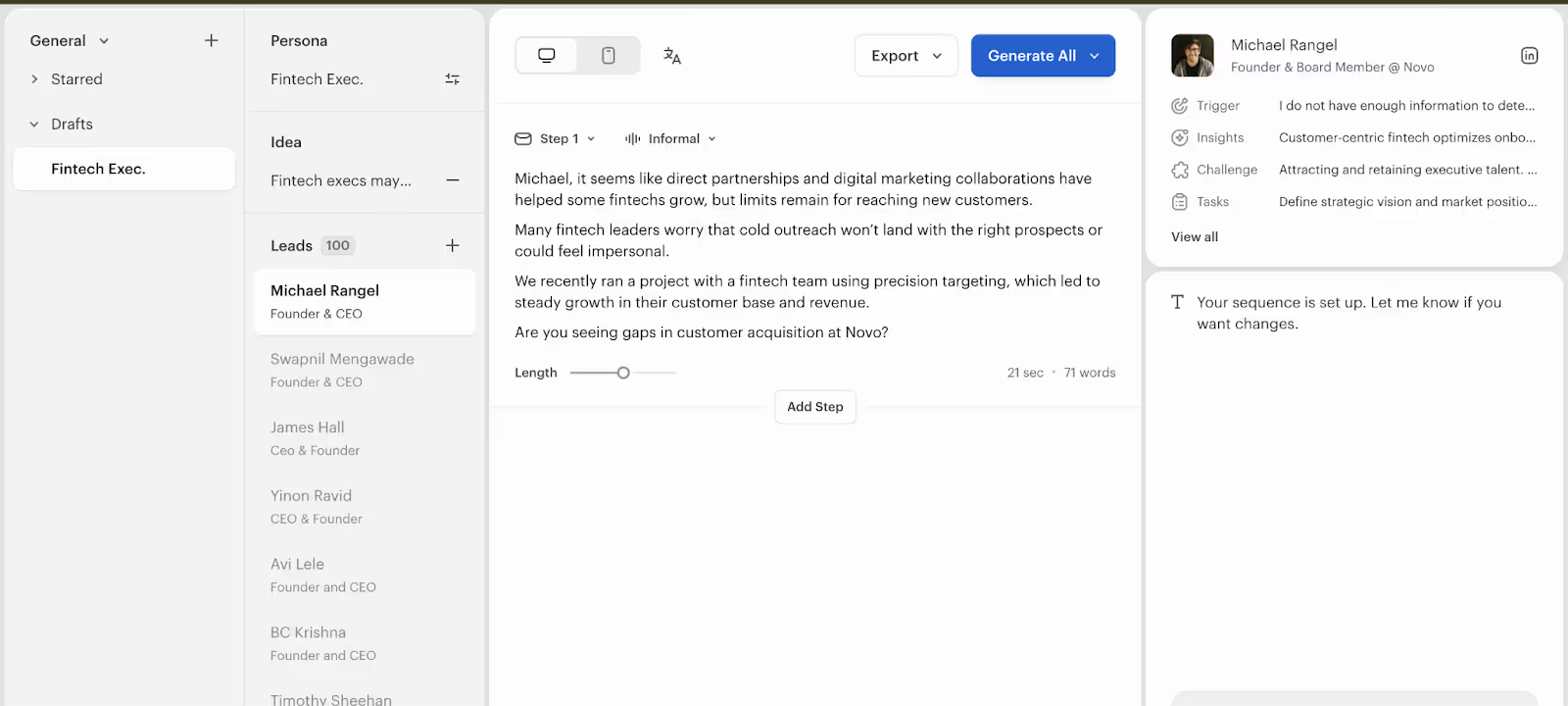
2. Multichannel works
If you depend on a single channel in the outbound sales world, chances are you’re missing out on lots of opportunities. Unlike a single channel that restricts your reach, multiple channels (cold emailing, cold calling, and LinkedIn) let you meet diverse individuals who could contribute to your business’s growth.
Just as an example, suppose you only rely on cold emails to generate leads; you miss out on potential leads from LinkedIn, phone calls, and other sources. We don’t just say this; the stat backs it up, stating companies that use three or more channels in their outbound strategies experience a 287% higher purchase rate than those that rely on a single channel.
Alex Vacca, COO and Co-founder at ColdIQ, shares an example of how a multichannel campaign generated 145+ leads for a client in the Amazon niche within 3 months. These four steps sum up how it was done:
- Day 1: Visited profiles and sent emails addressing their actual pain points.
- Day 2: Send thoughtful LinkedIn invites.
- Day 4: Send friendly, value-driven email follow-ups.
- If no response, we went all-in with a personalized Loom video clearly showing how we could help them solve their problems.
As you can see, we didn’t rely on a single channel to generate leads. We went all in, and so should you. Lemlist is a great tool we use for multichannel outreach. You can set up an outreach cadence combining email and LinkedIn to engage with prospects. From your Lemlist’s dashboard, click “Create campaign” and choose between the “AI” or “Manual process” to show the multichannel cadence.

3. AI is the team’s co-pilot
Your sales team is the pilot, but they also require an assistant to juggle the multiple tasks — identifying leads, crafting outreach messages, and following up. AI tools handle these repetitive and time-consuming tasks, allowing your team to focus on actual activities that matter.
They’re not a replacement for human workers. Instead, they are copilots that help to automate efforts. For instance, instead of manually digging through LinkedIn and company websites, you can use Clay to find a prospect’s details, including their role, pain points, interests, and so on.
In the example below, we used Clay’s AI agent, Claygent, to find the pricing details of companies instead of visiting their websites one by one.
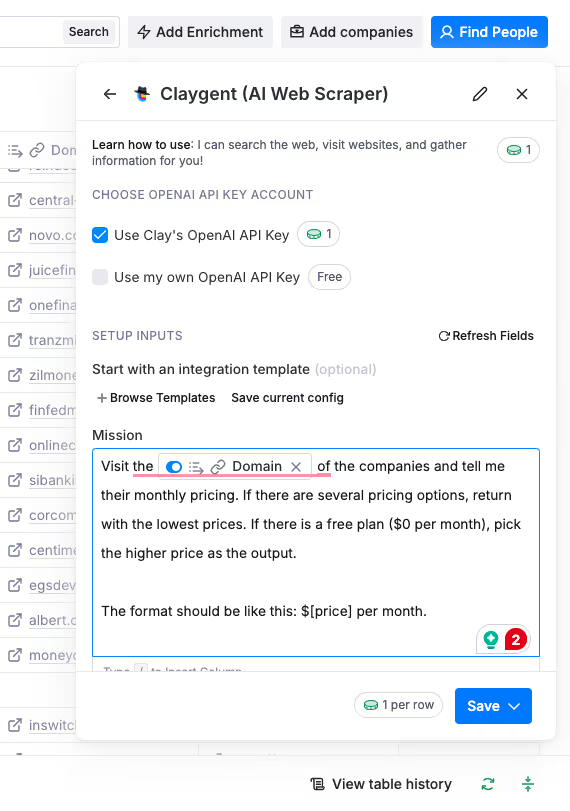
4. Sales automation is key to driving growth
Automation lets you perform tasks with minimal to little human intervention. While it’s easy to confuse automation with AI, the two are different. First, automation tools can’t make autonomous decisions, whereas AI does. Besides, AI can self-improve over time, but automation requires manual updates to do that.
That said, automation has helped salespeople to become productive. For example, you can use automation platforms to set up a sequence that goes out on schedule. Let’s say a prospect doesn’t reply to your email in three days, the system automatically sends a follow-up.
That’s the power of automation. It handles repetitive activities so you can focus on building relationships and closing deals.
5. Email deliverability matters
Email service providers have new sending rules. Your email accounts need proper authentication (SPF, DKIM, and DMARC) before you send out a large volume of emails. Without this process, your account would get blacklisted, sending your cold emails into the junk folder.
An email deliverability system lets you manage a large volume of cold emails without landing in spam. It manages multiple email accounts and warms up those domains just to protect your sender reputation.
For instance, you can use Instantly to build your deliverability system. You can set up authentication protocols, warm up domains, and even receive insights into your overall campaign performance without switching tabs.
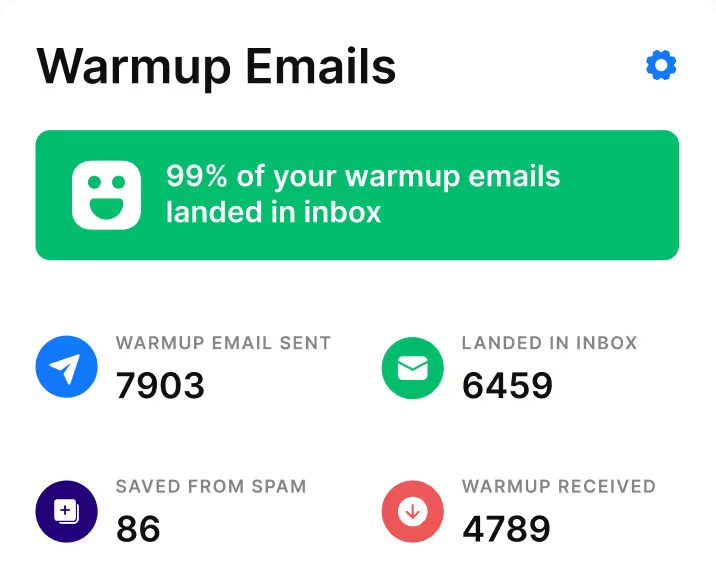
How are B2B sales trends evolving in 2025?
B2B sales is undergoing some massive shifts in 2025, as market dynamics, buyer expectations, and technology reshape how companies identify, engage, and close deals. When compared with general sales trends, there are massive differences. This section compares B2B sales trends against general sales trends and also discusses how companies approach it.

1. Decision-making process
B2B sales involve multiple decision-makers who influence the purchasing decisions. They evaluate solutions from different angles, which impact the outcome of the project in the long run. If you want to gain their support for a purchase, you’d have to create customized content at each stage of the buyer’s journey to address their needs and make them feel seen and heard.
On the other hand, general sales trends like B2C involve individual decision-makers who make decisions based on emotional connections and impulses rather than logical business-driven needs. As a result, business owners create content to connect with emotional needs, leveraging their desires to make more purchases.
2. Sales cycle
In B2B, the sales cycle takes a long time, usually months or years. Since many stakeholders are involved in the decision-making process, they deliberate matters and evaluate solutions before giving their support to the purchase.
On the other hand, general sales trends like B2C involve a shorter sales cycle. With only one person in charge of the decision-making process, deliberations are made quicker, creating room for frequent purchases.
3. AI and automation
AI and automation tools have become indispensable for sales teams over the years. They handle repetitive tasks and streamline activities, enabling businesses to focus on other activities such as closing deals.
In B2B sales, these technologies serve as co-pilots, assisting sales teams with lead generation and shortening the sales cycle. Some tools you can use include:
- Sales prospecting tools such as Apollo, Ocean.io, and more.
- Data enrichment tools such as Clay and FullEnrich
- Sales engagement tools such as Lemlist and Instantly
- CRMs such as HubSpot and Salesforce
- AI sales assistants such as Artisan and Relevance AI.
On the other hand, in B2C, businesses leverage AI and automation to analyze customer behavior and provide data-driven insights to personalize campaigns, increasing the chances of conversion.
4. Buyer expectation
In B2B, buyers expect vendors to be problem-solvers, addressing their needs and providing justification on why they should make the purchase. They demand transparency on the availability of the products, pricing, and other hidden details.
In contrast, B2C buyers want recommendations tailored to their needs. They expect the purchase process to move quickly, considering factors such as a fast-loading website, easy access to product information, and more.
How to build an effective outbound sales system in 2025?
Building an effective outbound sales system requires some working strategies. In this section, we will discuss these strategies so you can build your outbound sales system.
1. Invest in your team
Your team is the bedrock of your outbound sales system. They’ve got the specific skills to generate qualified leads, build relationships, and drive consistent revenue. Without the right people, your sales team may fail to hit the target. That said, here are some tips on how to build the right outbound sales team.
- Define clear goals and objectives for your sales team to keep them focused and aligned.
- Hire the right people with the right skills and attitudes. Focus on individuals who are not only skilled in communication but are persistent and have a growth mindset.
- Train your employees to align with your company’s services, messaging, and sales processes. Leverage role-playing to improve their confidence and closing skills.
- Equip your team with the right sales tools to enhance productivity and drive efficiency.
- Foster a collaborative team environment to create a sense of community and improve the team’s performance.
Note: Modern sales enablement trends emphasize that building the right sales team isn’t a one-time activity. It requires persistence, adaptation, and a commitment to improvement. As a leader, help them with their needs, whether it’s on how to run campaigns, consult a specific client, or close deals.
2. Define your ICP
Your ICP is the foundation of your outbound sales engine. If you don’t get this step, everything else falls apart. Like Michel Lieben, CEO and Founder at ColdIQ, would say, Vague ICP = vague messaging. If you don’t know exactly who you’re talking to, you’ll end up writing for no one. Get tight on your ICP first, then write.
This is true because your ICP determines how you would craft the message for your ideal audience. Imagine pitching a legal case management software to a banker. While the product is great, it doesn’t fit the right person because a banker doesn’t need to file court cases. Now that you get the concept behind an ICP, how do you do it?
- Analyze your existing customers: Review your best customers to identify who offers the most value and is a good product-fit. Collect and analyze data about their demographic, geographic, behavioral, or psychographic characteristics. Focus on their patterns and shared attributes.
- Conduct market research: Perform market research on potential customers who may need your products. Look at industry reports and social media trends to identify gaps in your industry and how your solution can bridge them.
- Create a buyer persona: Use the insights from your customer base and market trends to create a buyer persona. A buyer persona is a fictional representation of your ideal customers, detailing their interests, motivations, pain points, and more.
- Create an ICP template: Now that you have all the data, put it in a framework. Test your assumptions and track the results. Remember that creating is not a one-time activity. Refine your template as you continue to gather more data.
3. Build a targeted prospect list
With the right team and an ICP in place, it’s time to build a targeted prospect list. But before you proceed, be clear on your value propositions. Each segment in your ICP should have a unique pain point or interest that details why you need to help them. It could be as simple as “We help [ICP] solve [this problem] to achieve [quantifiable outcome].
Here is how it looks in reality: “We help HR leaders in fast-growing startups to automate onboarding so that new hires increase productivity by 50%.” Once you have this figured out, you can now build your prospect list. Here’s how to do this:
Using a data source
Sales acceleration tools such as Clay, Lemlist, Apollo, Ocean.io, and Instantly let you build your lead list within seconds. Once you choose your preferred tool, apply the desired filters, such as industry, revenue, headcount, tech stack, or geography, to narrow down target companies that fit your ICP. Below is an example of how to use Clay as a data source for list building.
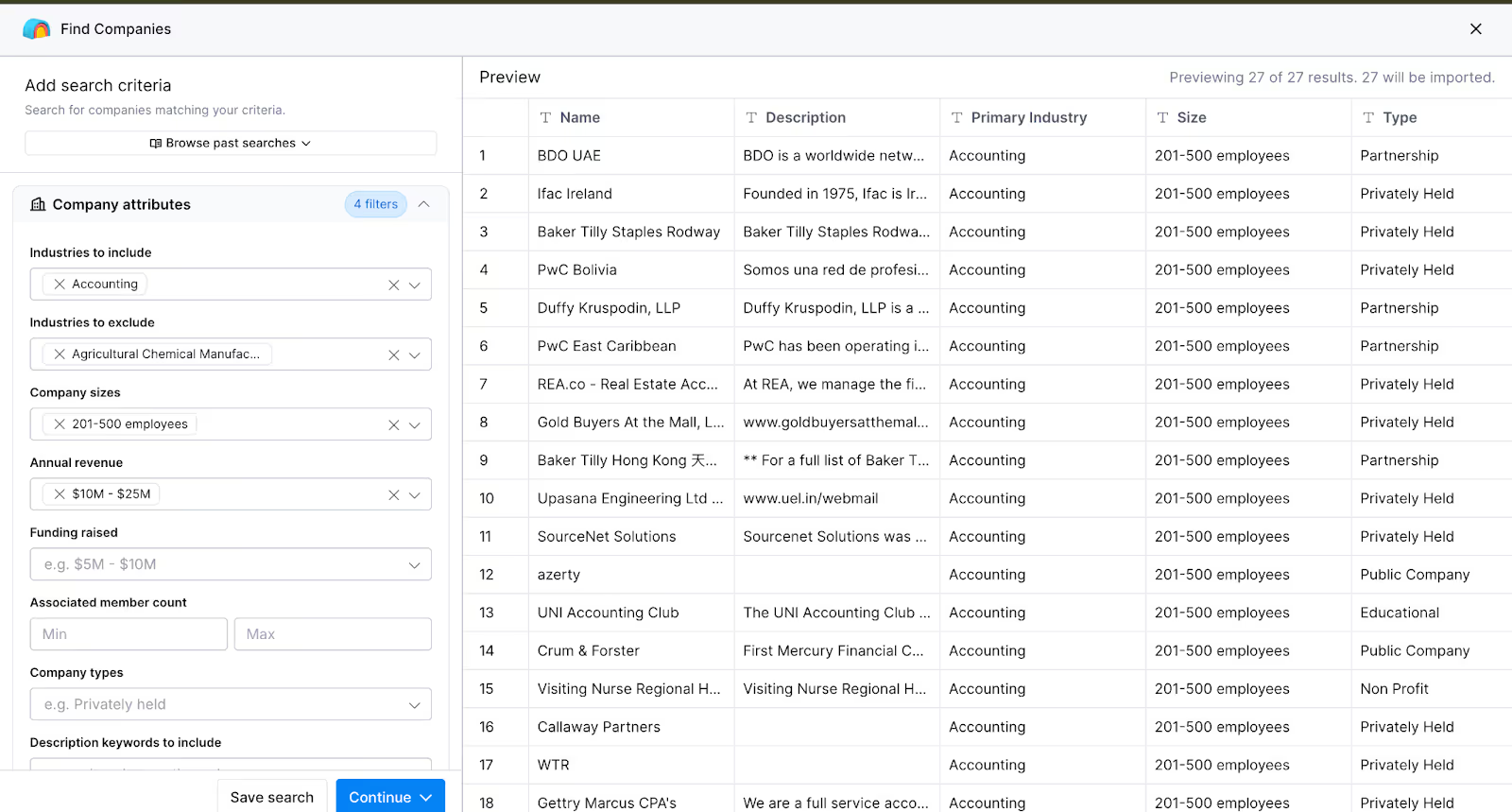
Using LinkedIn: With its vast database of professional networks, LinkedIn is another great source to find ideal customers. Leverage LinkedIn Sales Navigator to streamline your lead generation efforts. It comes with advanced search filters to pinpoint prospects based on job titles, companies, or locations, ensuring you create a targeted list.
Leverage intent signals
Some prospects give off signals that show their interest in buying a product or service. Tools like Clay, Common Room, and Unify let you set triggers to capture these signals (hiring signals, funding rounds, relocation, change in job titles) and offer real-time notifications to alert you about a prospect.
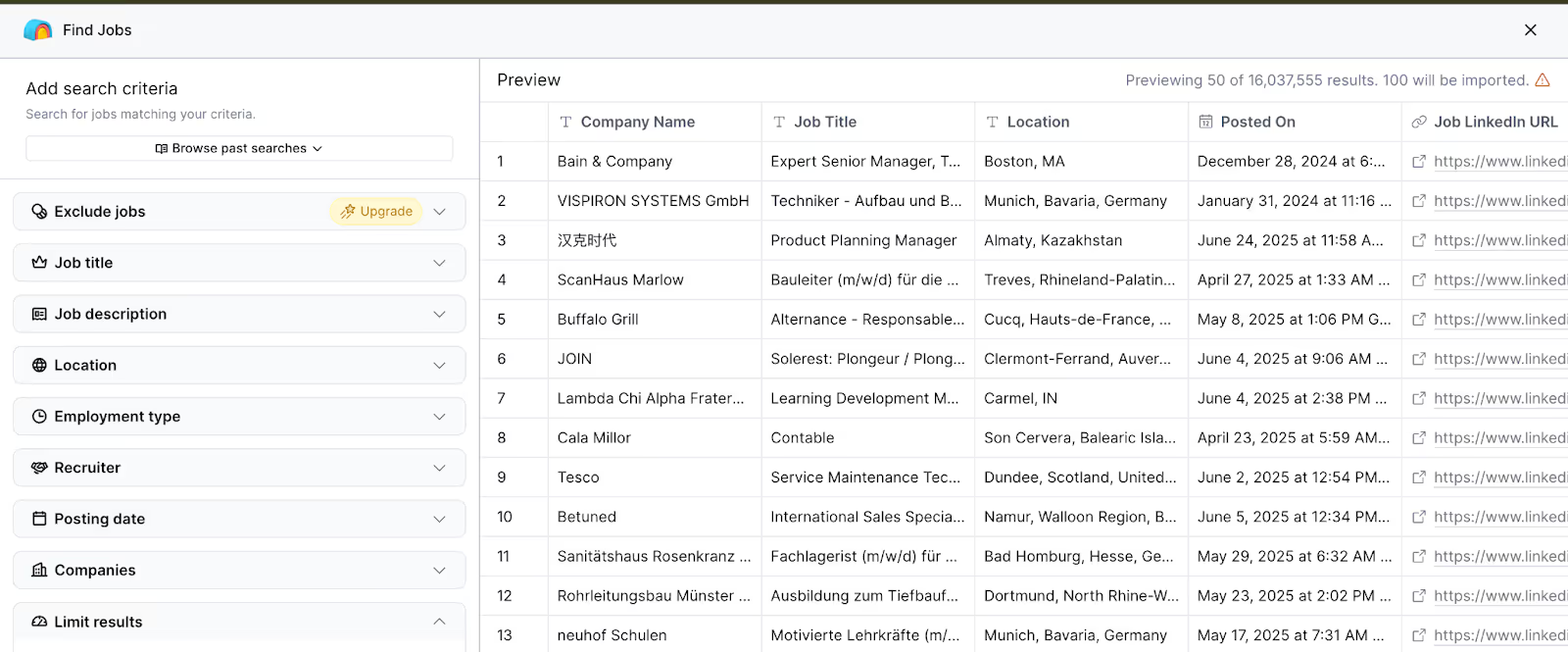
Enrich your lead list
Once you have curated a list of your ideal customers, enrich it to fill in details like email addresses and phone numbers. Use tools like Clay or FullEnrich to validate your list and remove wrong contact information.
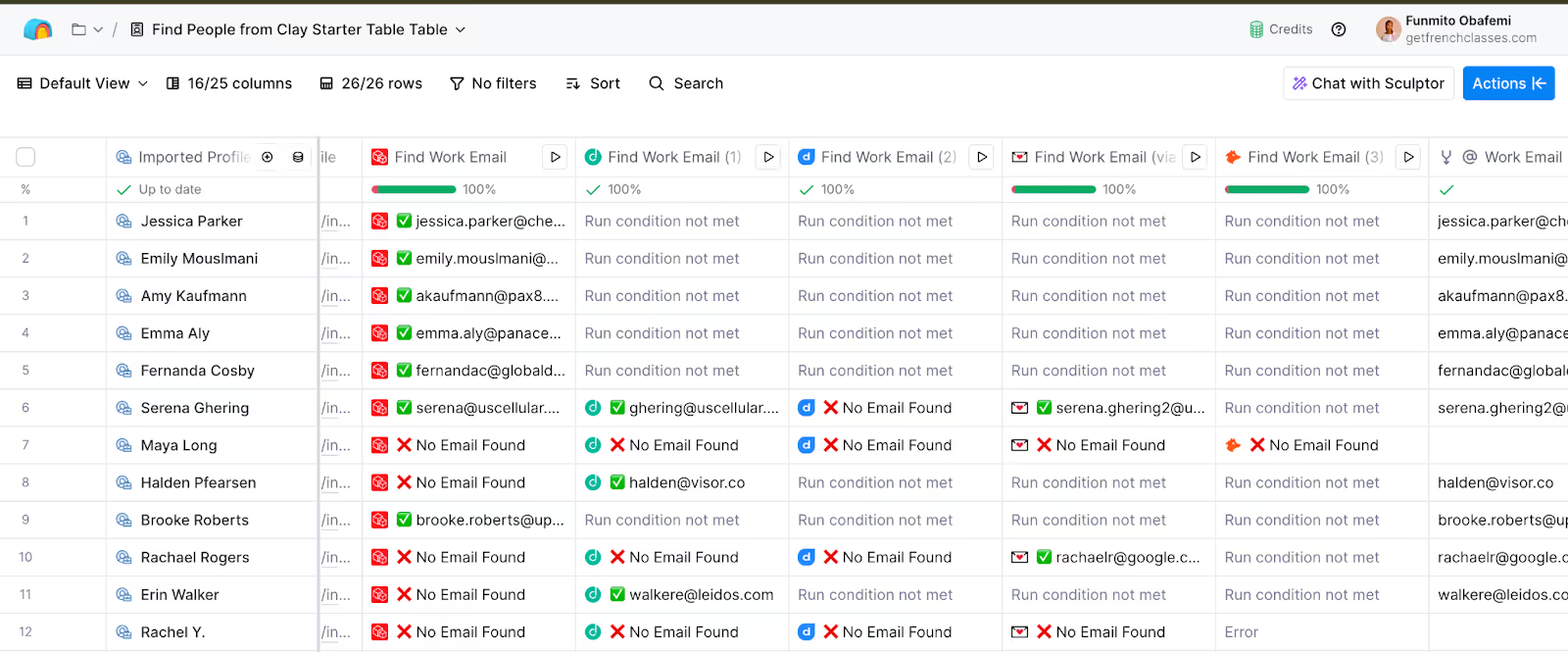
4. Plan your outreach sequence
With cold email having an average reply rate of 1% to 5%, sending a single cold email rarely works. You need to build a cold email sequence to increase your chances of getting a response. This includes a combo of initial email outreach messages, follow-up messages, and LinkedIn outreach messages.
Michel Lieben, CEO and Founder at ColdIQ, shares a multi-channel outreach framework to help you stay on top of your prospect’s mind without being pushy.
Day 1 → Visit their LinkedIn profile and send the initial outreach message.
Day 2 → Send an invitation on LinkedIn.
Day 4 → Send a follow-up email reiterating the client’s value proposition.
Day 7 → If they don’t accept your offer, send another follow-up email that includes a Loom video of how you can solve their problem.
By following this process, you are not limited. You can reach your audience on any of their preferred platforms.
5. Leverage AI to create personalized messages at scale
Leverage AI for sales to scale your sales operations and drive business growth. We didn’t say this; the stat backs it up with 83% of sales teams who use AI having a higher likelihood of witnessing revenue growth.
A great way AI works for sales is through personalized messages. Salespeople don’t have to craft messages one-by-one. With specialized outbound sales tools such as Clay, Lemlist, or Twain, you can generate hundreds or even thousands of messages within seconds, improving productivity among your sales team members.
6. Don’t forget deliverability
You don’t want your cold emails to land in spam. They won’t get anywhere or generate results. Instead, you want it to reach your prospect’s inbox, increasing the chances of getting a response.
To do this, you have to put some email infrastructure in place. Your email deliverability system comprises multiple components — multiple email accounts, inbox placement and management, email warmups, and deliverability.
Different outbound sales automation tools like Instantly, Lemwarm (from Lemlist), and Woodpecker allow you to set up an email deliverability system. Here’s the trick to this:
A. Authentication protocols
SPF, DKIM, and DMARC are non-negotiable. You must set up these authentication protocols to validate that your emails are not spam, enabling the email service providers to let them pass through successfully.
B. Email warmup
Sending hundreds or even thousands of emails at once will most likely land in spam. However, you can warm up your domains to improve the chance of reaching your prospect’s inbox. Alex Vacca, COO and Co-founder at ColdIQ, shares these tips on how to warm up your domains.
- Warm-up should last 3-4 weeks
- 5 emails/day to start the warm-up process.
- Add 5 more each day until you have 40 warm-up emails/day.
- Aim for a 30% reply rate on warm-up emails.
- Once you launch the campaign, you can send 40 emails/day/mailbox.
- Change the email warmup settings to 20 emails per day with a 70% reply rate once you start the campaign.
C. Inbox rotation
Sending a mass volume of cold emails from a single email account could have it blacklisted by the email service providers. But once you spread these emails among multiple accounts, you reduce the risk.
That’s what inbox rotation is all about. You need to set up lots of secondary email domains aside from the main one. By sending your cold emails across multiple accounts, you avoid spam filters and your sender reputation improves, ultimately improving deliverability.
7. Track and measure your performance
Your outbound sales campaign isn’t complete without tracking results. The best sales team treat their outbound campaigns as a continuous process, not a final activity.
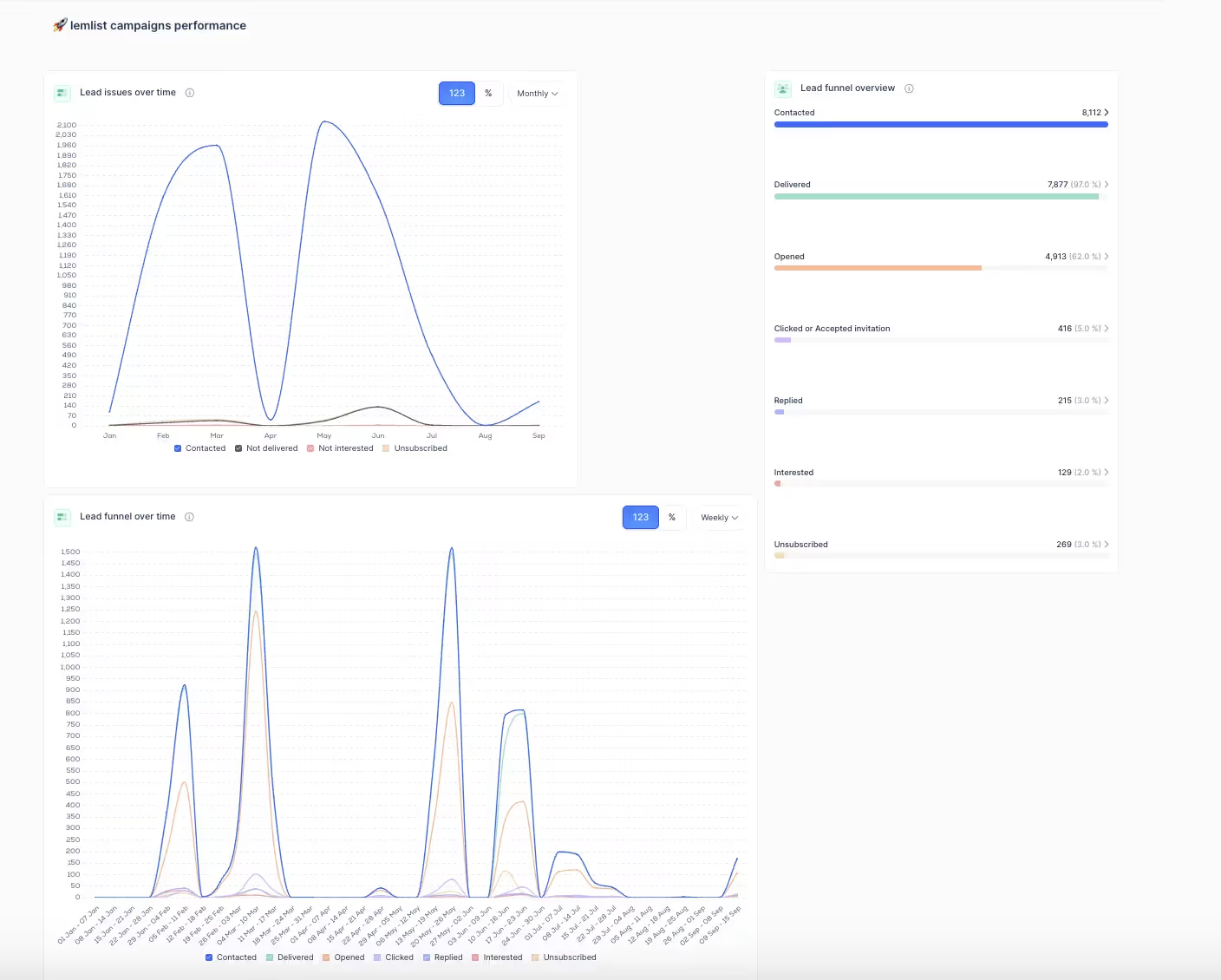
With ongoing monitoring of crucial metrics, you can identify what’s working, what needs improvement, and use data-driven insights to refine your outbound strategies. That said, here are some key metrics to track for your outbound campaigns.
- Open rate: It’s the percentage of recipients who opened your cold emails.
- Click-through rate: The percentage of recipients who clicked a link in your emails.
- Reply rate: The percentage of recipients who replied to your emails.
- Spam complaint rate: The percentage of recipients who marked your emails as spam.
- Meetings booked: The percentage of booked meetings
8. Refine and optimize strategies
After tracking results, it’s time to refine your strategies. When you improve some aspects (audience research, list segmentation, personalization follow-up sequences) of your cold email campaign, you gain insights into what truly works, enabling you to create a robust, sustainable outbound sales system that drives business growth.
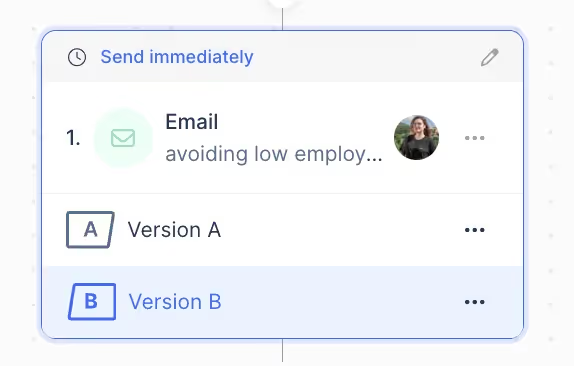
A great way to refine your cold email messages is to do an A/B test variation. First, split your prospects’ list into two groups based on similar characteristics such as pain points, interests, motivations, and more. Then, send each group a different version of the email to see which one performs better. Here are some key elements to test in your email;
- Subject line: Test a personalized versus a generic subject line. You can also test the length of the subject lines. For instance, you can start with personalization or use time-sensitive language to create fear of missing out (FOMO).
- Opening sentence: Experiment with the different phrasings in your email opener. For instance, you could start with personalized names (e.g, “Hello Jane”), utilize a concise summary (e.g., “Save time with our latest features"), or use recent news (e.g. Congratulations on your recent funding).
- Tone and length: Try out different tones and lengths for your cold emails. For instance, while one email may be formal, the other one may be conversational. Similarly, while one email may be short, the other can be lengthier.
- Call to action (CTA): Create two versions of your CTAs to see which one is better. For instance, you can go with a direct approach (e.g., “Schedule a call with us today”) or a softer approach (e.g., “Let me know your thoughts”).
- Sending time: Send the different versions to each group at different times. For instance, send one in the morning (e.g,. 9 am) and the other at noon (e.g., 2 pm) to see which yields better results.
Setting up an outbound sales system involves some unique strategies. But if implemented correctly, you’d flood your sales pipeline with unique opportunities. However, if you encounter some difficulties, identify the challenges and iterate. Tweak your strategy continuously for effective results.
How are sales enablement tools shaping outbound success?
Your outbound sales system requires some tools to work effectively. This section discusses these tools and some tips for choosing the right ones.
Types of outbound sales tools
Different outbound sales tools exist in the market, with each performing its function. Here are some examples across various categories:
1. Sales prospecting tools
Sales prospecting tools help to identify, find, and engage qualified leads to boost your lead generation efforts. Examples include:
- Social prospecting tools: Using social media to find and engage leads, e.g., LinkedIn Sales Navigator
- B2B data sourcing platforms: Use large databases to find prospects and companies’ information (names, company, job titles, revenue, etc). E.g., Apollo.io, Ocean.io, or Amplemarket
- Intent signals: Leverage buying signals to capture prospects’ interest and generate leads e.g., Common Room, Unify, RB2B, or Trigify.
2. Data enrichment tools
Data enrichment tools are perfect for finding additional information about your prospects. For instance, if you want to find a prospect’s valid email addresses or phone numbers, you can use tools like:
- Clay → Renowned for its waterfall enrichment solution by accessing up to 50+ data sources and integrating with numerous third-party platforms for easy data transfer.
- FullEnrich → Also uses waterfall enrichment solutions, but limited integrations.
- Prospeo → Use its database to find valid email addresses and phone numbers, but there is no integration.
3. Sales engagement tools
Sales engagement tools manage your outreach activities across multiple communication channels such as LinkedIn, emails, and phone calls. With a user-friendly interface, you can communicate with your leads and build meaningful relationships with them. Examples include:
- Lemlist → Renowned for its AI-powered email automation capabilities and multichannel outreach.
- Twain → Perfect for crafting personalized sales messages.
- Outreach Playbook Talk → Popular for LinkedIn outreach.
4. Email deliverability tools
Email deliverability manages your deliverability to land your emails in your inbox, not the spam folder. These tools include:
- Instantly → Manages multiple accounts and warms up domains to ensure deliverability.
- Woodpecker → Follows due email deliverability processes to avoid the spam folder.
- Lemwarm → Perfect for monitoring email performance, maximizing replies, and reaching your prospects’ inboxes.
5. AI sales agents
AI sales agents leverage artificial intelligence to automate and streamline sales processes such as lead qualification, outreach, and booking meetings. Examples include:
- Claygent (Research agent) → Ideal for finding any information from the Internet.
- Artisan (AI SDR, Ava) → Serves as a co-pilot to automate repetitive tasks and activities.
- Relevance AI → Perfect for reducing administrative tasks to accelerate the sales cycle.
6. Workflow automation platforms
Workflow automation platforms use pre-defined rules to automate certain activities, reducing manual labor and human error. Examples include:
- Make → Popular no-code platform that connects to numerous applications to automate workflows and activities.
- n8n → AI-powered workflow automation tools that let you transfer data easily and schedule tasks in advance.
7. Customer relationship management systems (CRMs)
CRMs centralize, analyze, and manage your prospects’ information in a single, accessible database. It gathers and organizes data from various channels — LinkedIn, emails, phone calls, WhatsApp —- for easy access and transfer. Examples include:
- HubSpot → A popular CRM that manages and tracks customer data.
- Salesforce → Another renowned CRM that tracks customers’ information across marketing and sales channels.
- Freshworks → Suitable for small teams. It houses all information relating to your prospects.
8. Appointment scheduling tools
You don’t have to manually deliberate meeting times or schedule meetings in advance. Scheduling tools automate time-consuming tasks such as coordinating availability, booking appointments or sending reminders. Examples include:
- Calendly → Perfect for simplified scheduling and team collaboration.
- Google Calendar → Great for users within the Google ecosystem.
Choosing the right AI sales tools can be quite challenging. However, by considering factors such as the ease of use, features, budget, and compliance with regulations, you can choose the right tool that aligns with your sales team and business objectives.
What challenges do companies face with outbound sales today?
As good as outbound sales is, it also has its drawbacks. While some challenges arise from typical outbound sales mistakes, others could be a result of setup. That said, here are three key challenges salespeople face with outbound sales.
1. Poor data
Data is a hit-or-miss issue, especially if you don’t track your campaigns. In outbound sales, the correct email address, company name, or phone numbers matter. This happens when you don’t update your list regularly.
To avoid this issue, clean your list to eliminate incorrect or outdated prospects’ information. This lets you have an up-to-date list that powers your outbound campaigns.
2. Lead quality
In a sea of multiple prospects in your database, identifying the right ones can be a hard chore. It’s like finding a needle in the haystack.
If you don’t know how to find the right prospects, we recommend using the right sales tools and filtering the prospects based on specific criteria like job titles, revenue, or company news to sharpen your aim. This lets you narrow that alignment with your campaign goals.
3. Generic messaging
When your messaging isn’t effective enough, it will fail to connect and resonate with your prospects. Instead, personalize your messages. Make it relevant to your prospect’s needs and specific challenges.
Like Gerardo Teijeira, GTM Team Lead at ColdIQ, advises, “Companies should stop thinking that they can get away with just contacting anyone on their campaigns, all with the same message. They need to actually think about what's relevant to their ideal customer.”
Why choose a full-service agency like ColdIQ for outbound sales?
Building an outbound sales system is a lot. With so many strategies to implement and tools to choose from, you’d find it challenging to get it right. So, why don’t you partner with ColdIQ? Our sales teams are highly experienced to offer the right guidance and do the heavy lifting for you. Here is how we help with that:
- Lead targeting and qualification: We map out your ICPs, set up custom triggers, and leverage the right tools to build a highly-targeted prospect list for your outbound campaigns.
- Email infrastructural setup: We perform the technical operations to set up your email deliverability system (multiple email accounts, email warmup, inbox management) to land in your inbox, not spam.
- Expert copywriting services: Stop with the generic messages! Our sales experts craft hyper-personalized messages tailored to your customers’ needs.
- Campaign optimization: We track campaign performance to identify areas of improvement and refine your strategies for continuous improvement.
If you struggle to build a scalable outbound sales system that generates high-quality leads, ColdIQ provides a way out of this cycle by building the right sales system that floods your pipeline with qualified opportunities.
Build a powerful outbound sales system in 2025
Building and running an outbound sales system isn’t a game of luck. After all, the latest sales management trends are strategic, involving defining your ICP, targeting your potential customers, crafting the right personalized messages, and setting the right infrastructure to accelerate the sales cycle.
If you find all these processes cumbersome, we recommend outsourcing to experts who can handle the job for you. ColdIQ can build a scalable outbound engine to generate consistent opportunities and drive revenue growth. Book a GTM strategy call today!




.avif)
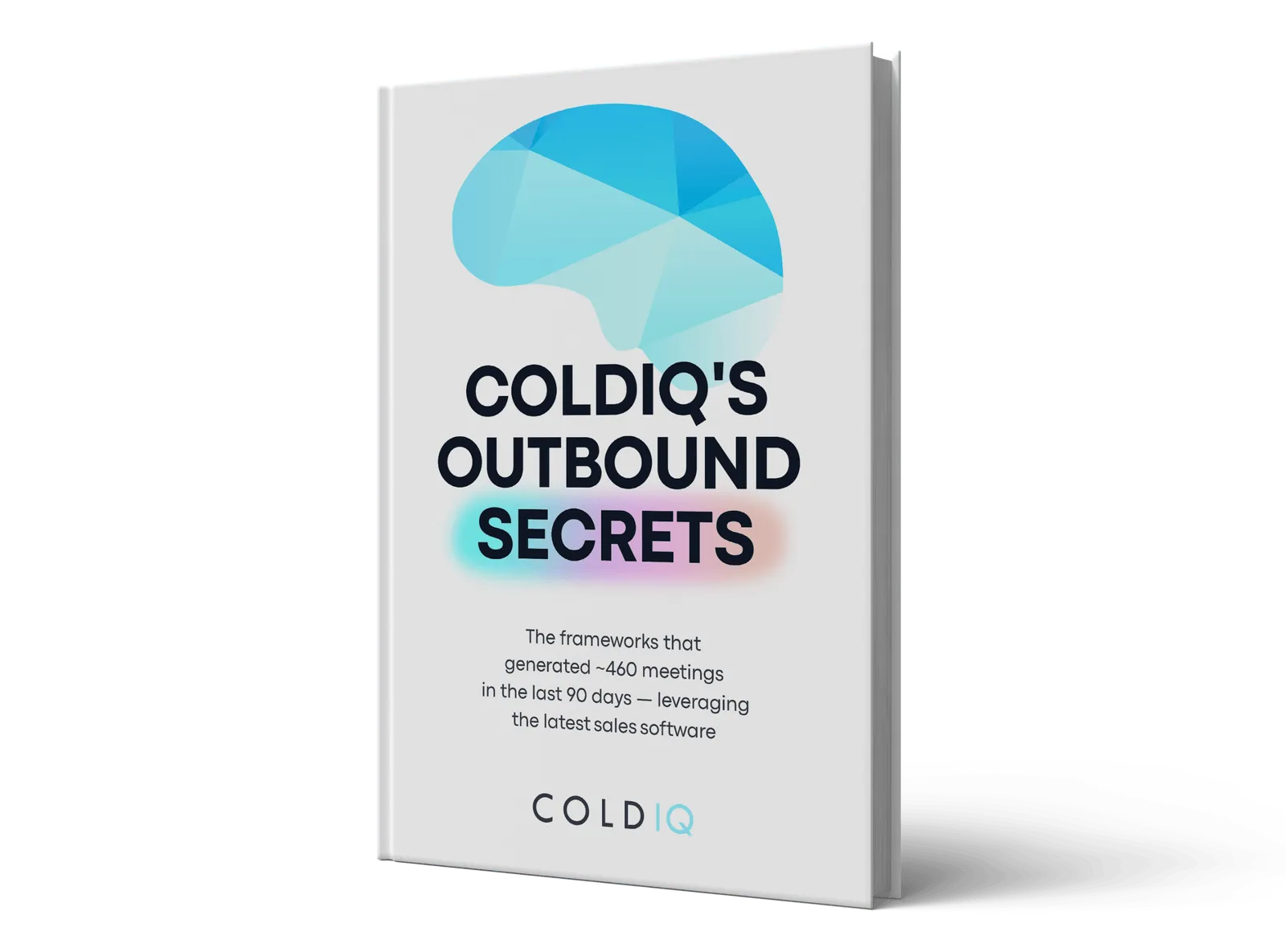
.svg)
.avif)
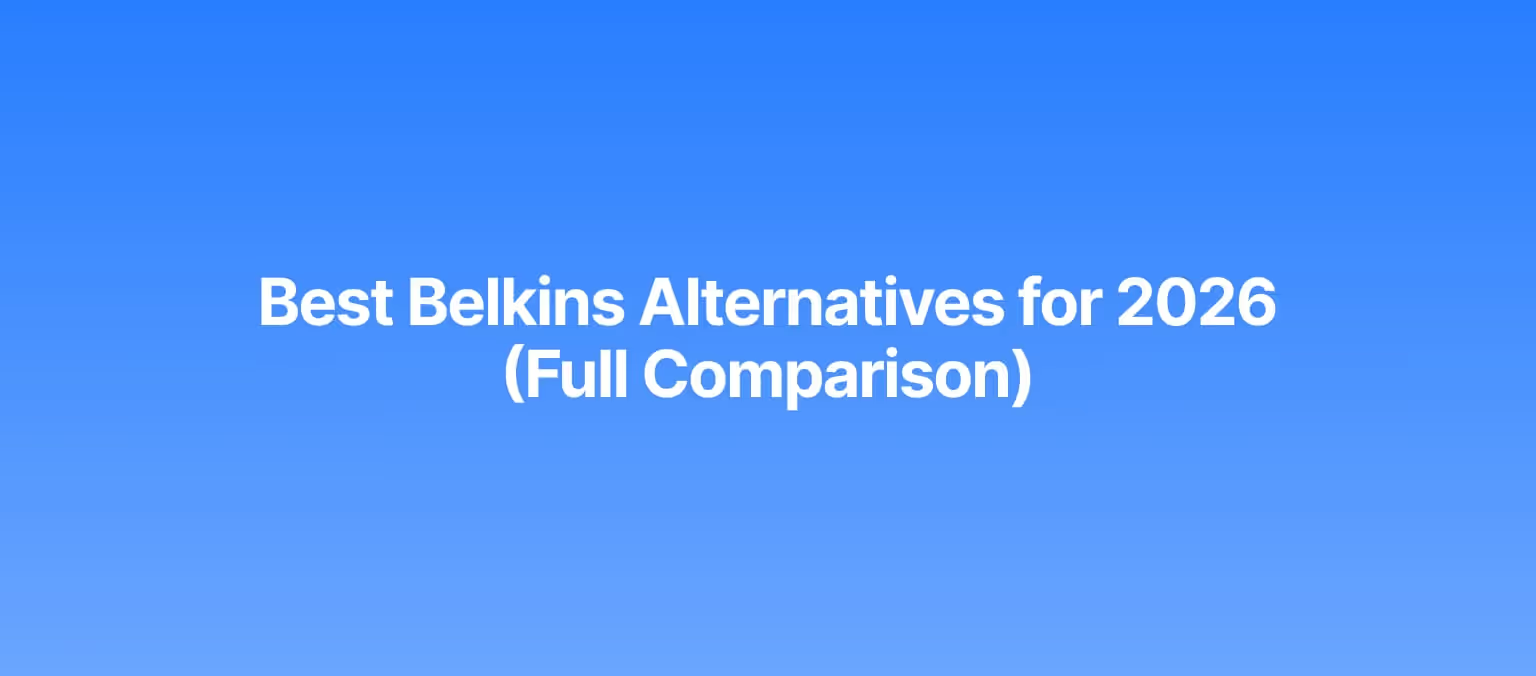


.avif)
